News Update
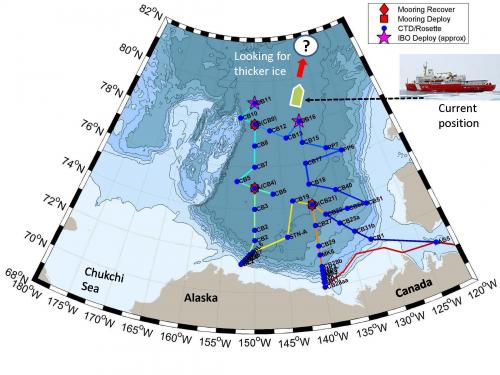
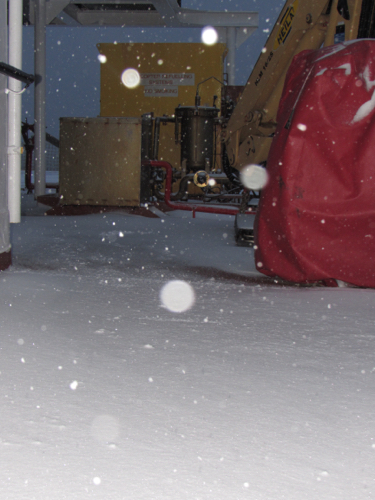
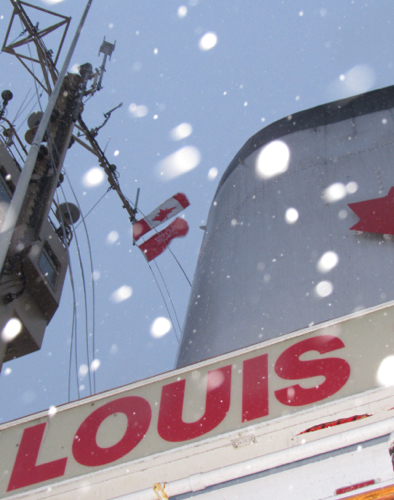
The helicopter pilot is understandably reluctant to fly in high winds and driving snow. It is important to find the 2-3-meter multi-year ice so that the ice station is:
1) safe to work on and
2) will be able to support the to-be-deployed Ice Tethered Profiler (ITP) that holds all the instrumentation that will be left behind.
Multi-year ice tends to move around, driven by the wind ocean currents, so the data collected can give us a somewhat random survey of the remote arctic 24-7, 365. Most of the ITP's are never recovered (unlike the moorings). Each ice station costs about $75k, but it costs about $90k to travel a specific site for a recovery operation and since most of the equipment is crushed to bits by the ice flow, all that is usually recovered is a bunch of un-reusable stuff. So it is (ironically) more economical to just leave it as "sea trash".
Alphabet Soup
Time to play acronym alphabet soup! Any organization worth its salt has to have a myriad of acronyms. JOIS 2017, is no exception. Here is a list of the most common acronyms I've run into thus far:
ADCP - Acoustic Doppler Current Profiler
AON - Arctic Observing Network
BGEP - Beaufort GyreA spiral oceanic surface current driven by the wind. Exploration Project
BGOS - Beaufort GyreA spiral oceanic surface current driven by the wind. Observing System
CCGS - Canadian Coast Guard Ship
CDOM - Colored Dissolved Organic MatterMaterials and debris that originated as living plants or animals.
CRREL - Cold Regions Research Laboratory
CTDA research tool that is submerged in the water to measure conductivity (salinity), temperature, and depth. - Conductivity, Temperature, Depth probe
DFO - Fisheries and Oceans Canada (Department of Fisheries and Oceans)
DIC - Dissolved Inorganic Carbon
DO - Dissolved Oxygen
IBO - Ice-Based ObservatoryA location used for observing terrestrial and/or celestial events.
IMBB - Ice Mass BalanceThe difference between the mass gained by new ice growth and the amount lost by melting. BuoyA float moored in water or ice to mark a location, warn of danger, or indicate a navigational channel.
IOS - Institute of Ocean Sciences
ITP - Ice-Tethered Profiler
JAMSTEC - Japan Agency for Marine-Earth Science and Technology
JOIS - Joint Ocean Ice Studies
LSSL - Louis S. St. Laurent (the icebreaker ship)
MIZ - Marginal Ice Zone
PACI - Pan-Arctic ClimateThe average weather over a particular region of the Earth. Climate originates in recurring weather phenomenon that result from specific types of atmospheric circulation. Investigation
pCO2 - Partial pressure of Carbon Dioxide
SAMI - Submersible Autonomous Moored Instrument
SC - Santa Claus (you never know being this close to the North Pole)
UM - University of Montana
WHOI - Woods Hole Oceanographic Institution
XCTD - Expendable Conductivity, Temperature, Depth probe
Crew Member Focus
Tony Walker is the Logistics Officer for the Louis S. St. Laurent. Tony came to the Coast Guard after a stint at the Marytown Shipyard. Prior to that he attended Burin College where he got his accounting background. Tony lives in Garnish, Newfoundland when not on ship, he is married and has two grown children. He says Garnish was historically a fishing community but "a lot of lives were changed" when the fishing moratorium was put in place in the mid 1980's. As the Logistics Officer, Tony supervises the galley staff, the housekeeping staff and the ships Storekeeper. He also manages the ships budget and functions as the ships administrator. Having been with the Coast Guard now for 27 ½ years, he is starting to think seriously about retirement so he can pursue some of his hobbies (golf, fly fishing, moose and bird hunting) full time.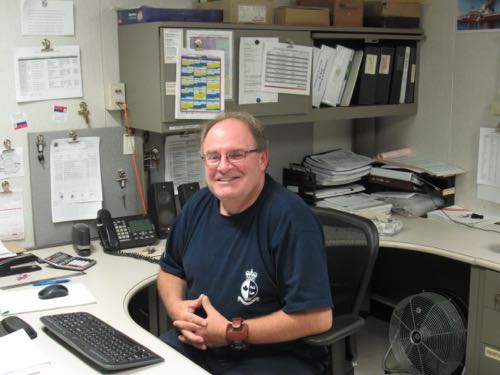
Outstanding Geo-engineering (super cold Arctic)
From the 1950’s to the 1970s, the public interest to the Arctic studies grew due to intensive development of natural resources in the Northern parts of Siberia (gold, diamonds, oil, gas, etc.). This development has resulted a significant intensification of Northern Sea Route navigation as well as numerous discoveries of arctic scientists working year round on drifting stations in the Arctic Ocean (read more about history of polar studies at www.whoi.edu/beaufortgyre and go to 'History'). People working in the Arctic suffered in the extremes of Arctic weather. Several ideas on how to improve life of people at these stations were proposed in letters received by the Arctic and Antarctic Research Institute from people motivated to help. One of these letters proposed planting trees around the perimeter of ice floes assuming that tree roots would prevent ice from breaking apart.
An “outstanding” idea was described in one of these letters by somebody with last name Balabanov. I do not recall his first name and unfortunately we could not find his letter in the AARI archives two weeks ago, but I still remember some details of this project. Balabanov provided a plan with some technical details on how to separate the Arctic Ocean from the rest of the world. The next two figures explain how to do this. 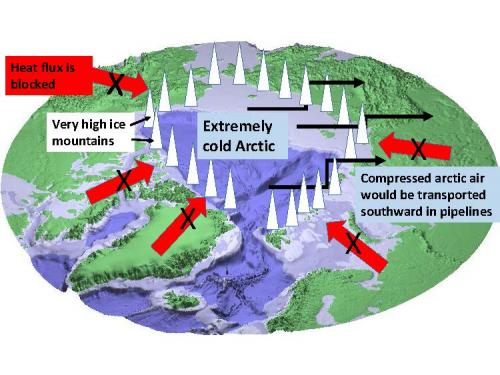
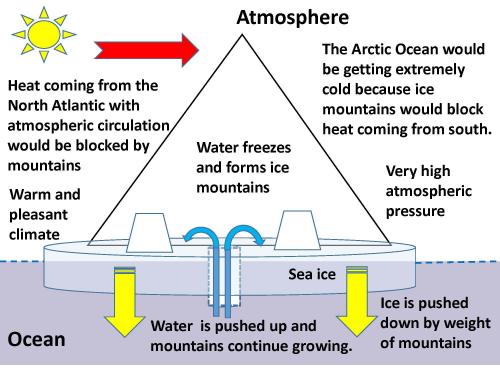
After this point (Balabanov hypothesized), the climate of our planet would significantly improve. Moreover, the very cold and dense (practically compressed to liquid conditions) arctic air, could be transported by pipelines to the low latitudes. It could be used in various ways – transportation, for example. He assumed that expanding air could be used in motors of cars and buses.
If you have questions and/or your own proposals and new ideas about Arctic climate change by geo-engineering, please contact Susan Sholi at shsholi [at] whoi.edu.
Scenes from Around the Ship
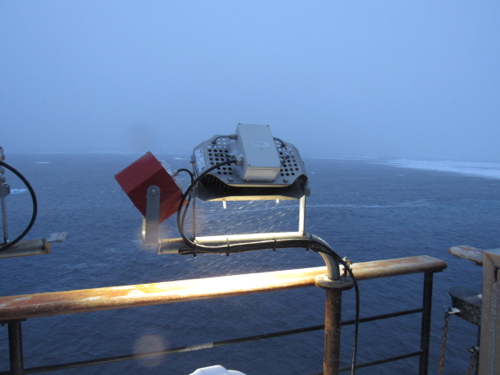
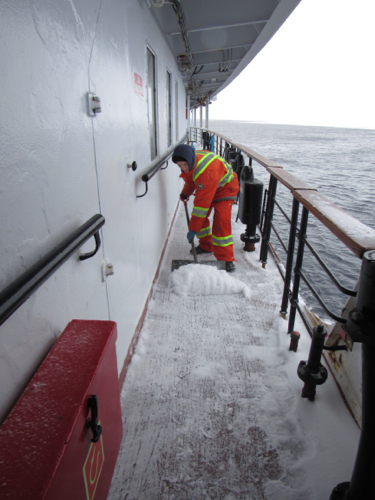
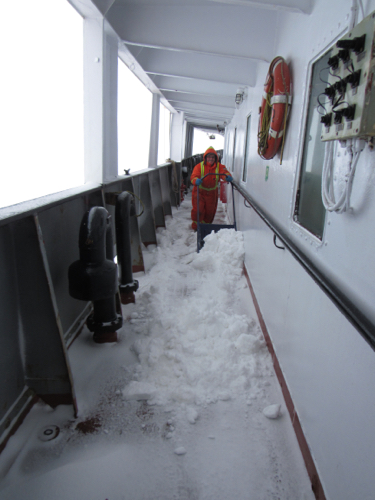
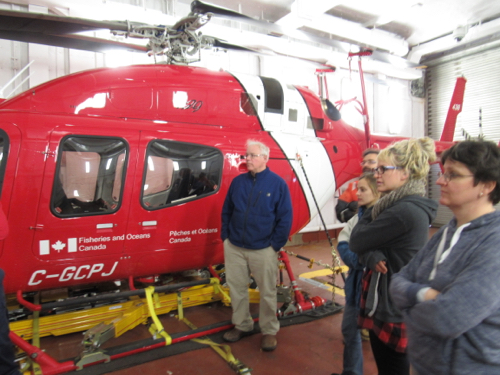
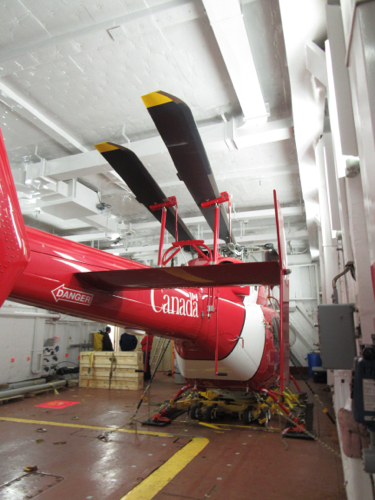
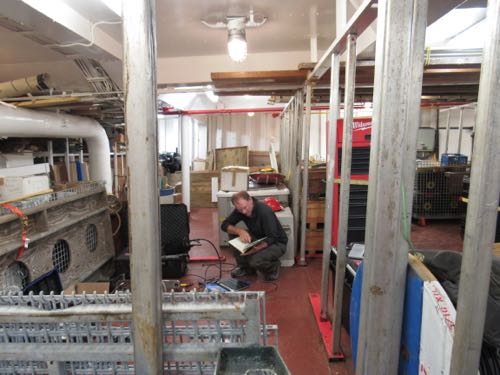
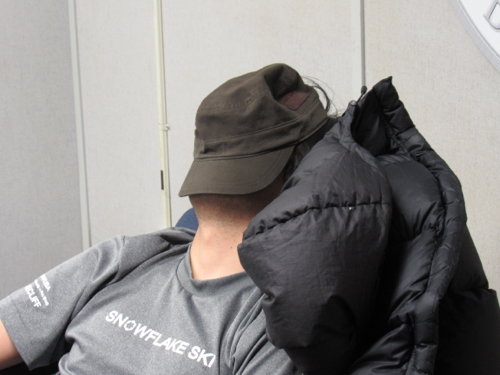


Comments